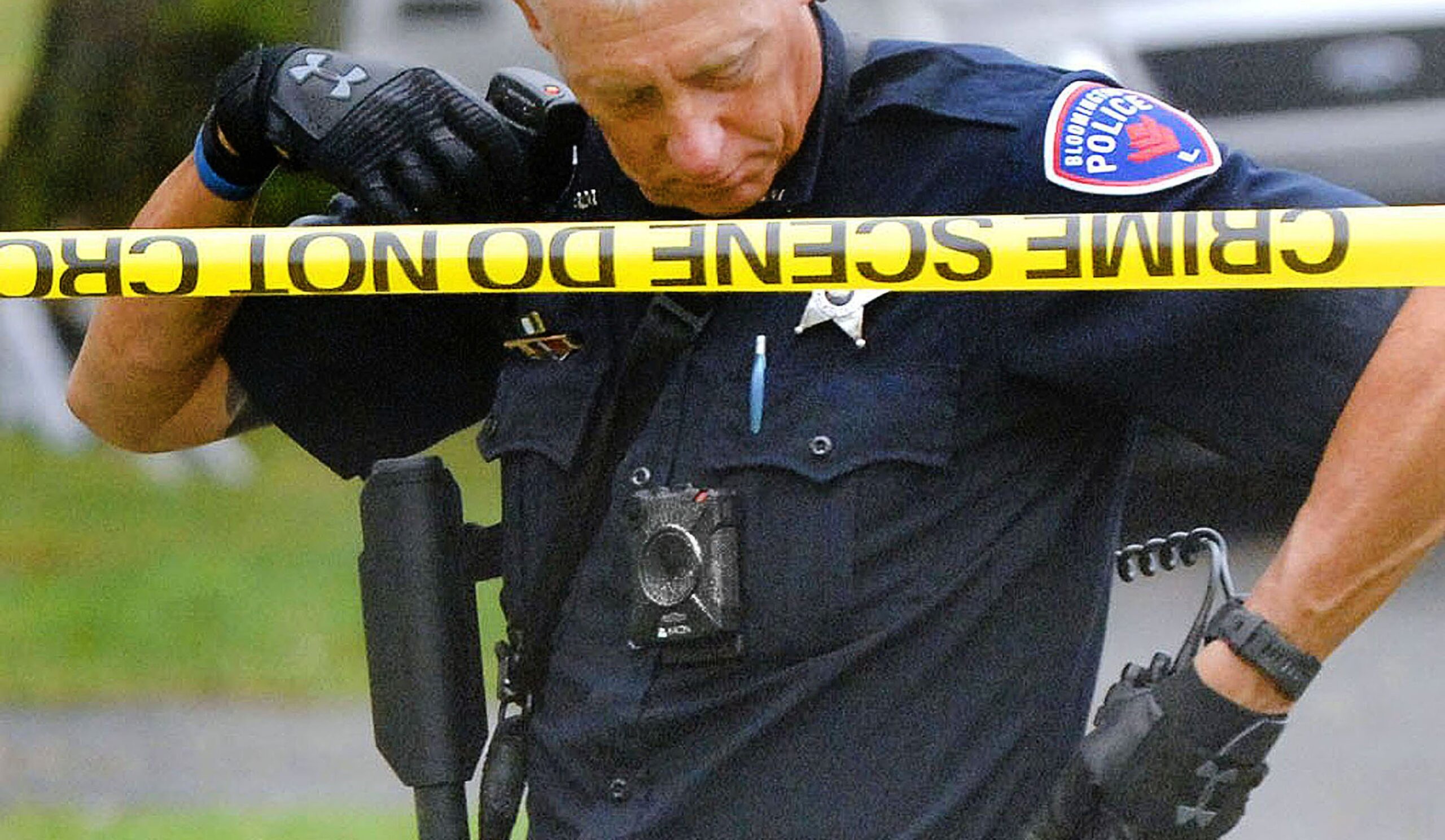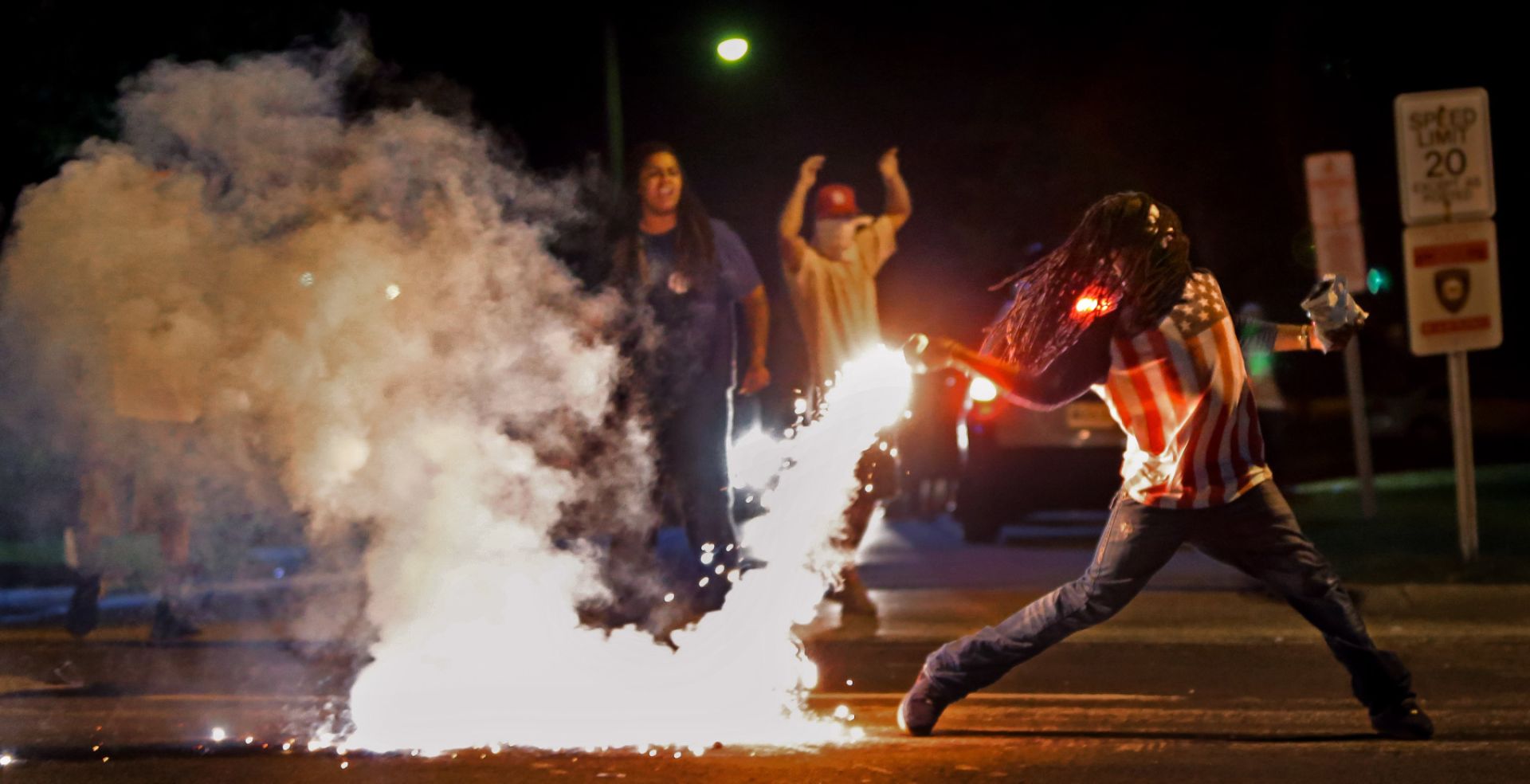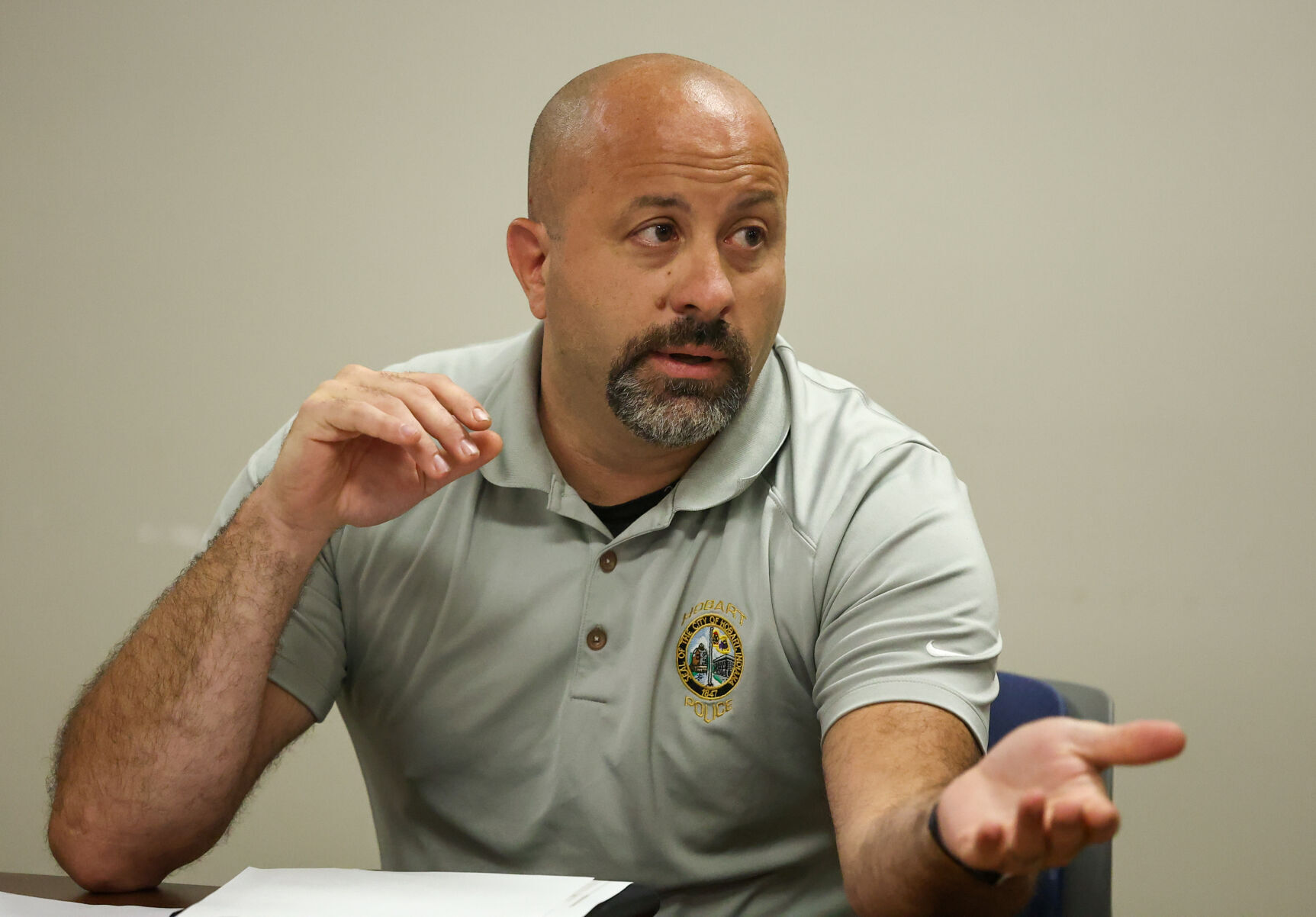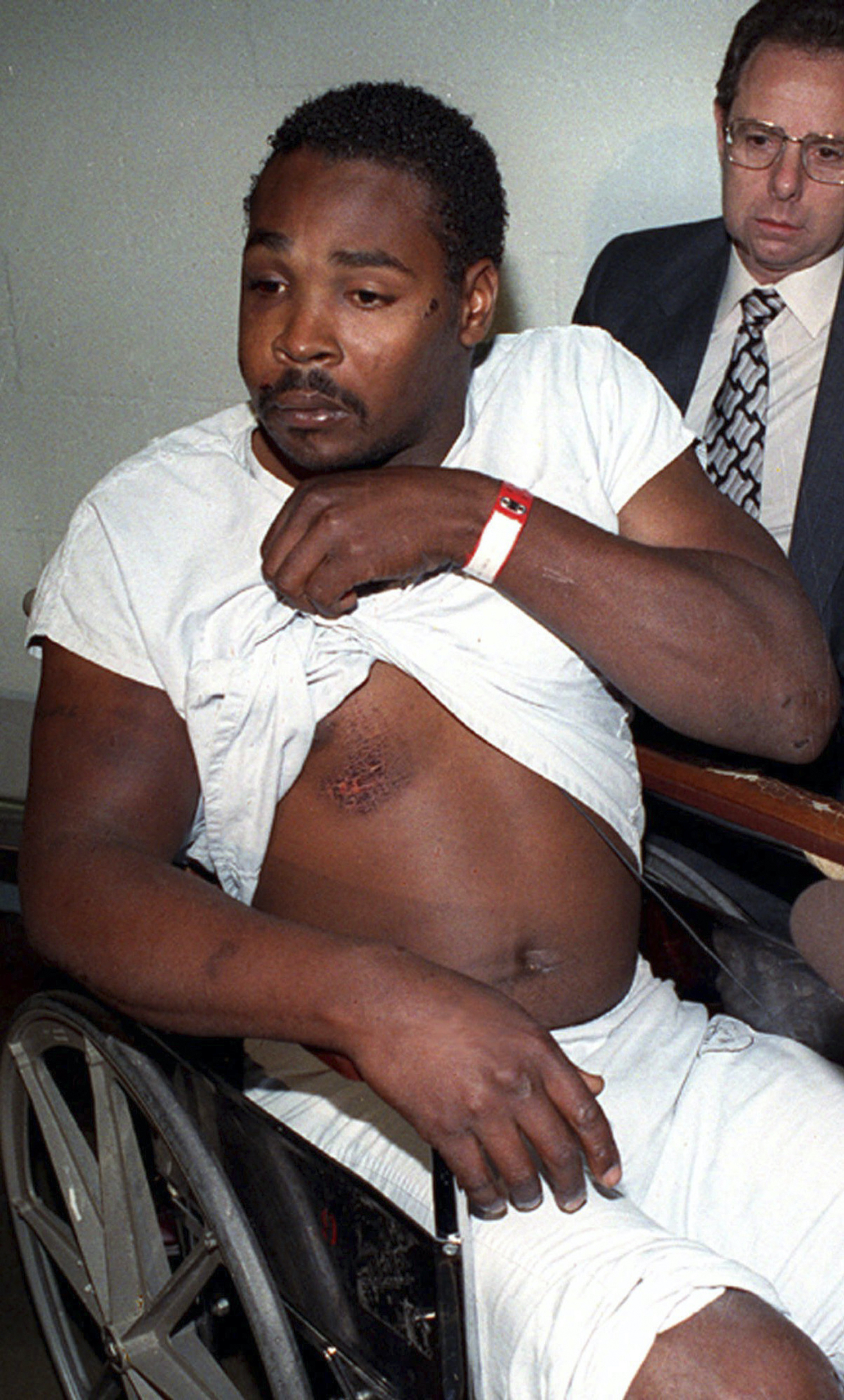Robin Fritz, a 5-foot-1-inch woman in her early 60s, was “terrified” when she was tackled by a sheriff’s deputy in Sullivan County, Tennessee, she said in a civil rights lawsuit filed last year.
The encounter came after she confronted a teenage neighbor who she said was driving recklessly. In the suit, Fritz said she asked deputies called to the scene to wear a mask or observe social distancing during the height of the COVID-19 pandemic, at which point one deputy showed a “hostile demeanor,” pinned her to the ground and arrested her.
As the multimillion-dollar suit moves forward, her attorney, James W. Friauf, lamented that there apparently is no video of the incident. The sheriff’s office does not use body cameras, and Friauf said he was unaware of any bystander footage.
Video would make “a huge difference,” Friauf told Lee Enterprises and Type Investigations. “We would hope it would conclusively show her being assaulted and basically substantiate all the allegations in the complaint having to do with the law enforcement officials. But unfortunately, there are no cameras.”
That makes it basically a case of he said, she said, according to Friauf.
When asked about the lawsuit, Sullivan County Sheriff’s Office Capt. Andy Seabolt said the agency could not comment regarding pending litigation, and County Attorney Dan Street declined to answer questions about the case.
In the three years since the murder of George Floyd was caught on a bystander’s phone camera, law enforcement agencies large and small across the nation have invested in body-worn cameras, also called BWCs, and dashboard cameras for patrol vehicles.
But even as cameras have proved crucial to documenting cases of police brutality, some agencies have yet to fully utilize them.
Most law enforcement agencies surveyed have cameras
As part of a seven-month investigation, Lee Enterprises and Type Investigations reached out to more than 170 law enforcement agencies across much of the United States seeking information on topics including diversity, citizen complaints and the use of cameras.
Of the 142 agencies that answered questions on camera availability or use, 93 said they had both body and dashboard cameras for at least one of their members and vehicles.
Twenty-four agencies said they had bodycams but no dashcams. Sixteen said they had only dashcams.
Only seven said they had neither bodycams nor dashcams.
Few agencies remain camera shy
Data gathered from October 2022 to May 2023 shows of the 142 agencies that answered questions on camera availability or use, 93 said they had both body and dashboard cameras for at least one of their members and vehicles.
The largest of those is the 249-member Sullivan County Sheriff’s Office, whose deputies were involved in the encounter with Fritz. Seabolt, the sheriff’s office captain, wrote in an email that the office’s lack of cameras “has been a budget issue; however, in-car video systems for patrol deputies are currently in the procurement process.”
Even agencies that have cameras may not require their use. The Appomattox County Sheriff’s Office in Virginia, for instance, said it had 12 body cameras but that no sworn members were required to wear them on duty. Officials with the sheriff’s office could not be reached for comment.
The majority of agencies that responded to questions about cameras (about 77 percent) mandated or planned to mandate bodycams for at least some officers in the field. Some said they required use by all officers on patrol, for instance. Others said they required use for all sworn personnel or all uniformed officers.

A Bloomington Police officer wears a camera while investigating the scene of a shooting in 2018. Image: David Proeber/The Pentagraph
The majority of agencies that responded to questions about cameras (about 77 percent) mandated or planned to mandate bodycams for at least some officers in the field. Some said they required use by all officers on patrol, for instance. Others said they required use for all sworn personnel or all uniformed officers.
“Let’s just say this,” said Brandt Parsley, public information officer for the Bloomington Police Department in Illinois, “there is no gray area in our policies. It’s a ‘shall.’ You shall have your body camera activated.”
He added, “Every possible police scenario that the Bloomington Police Department gets sent to, our bodycam is running.”
Dashcams, which some agencies used as early as the 1960s for traffic enforcement but became more common in the 1980s, were also used widely among the respondents, with more than half of the agencies that gave information on dashcam usage indicating that all or nearly all patrol vehicles had cameras.
Camera use on the rise in US
The agencies that responded to the Lee survey had a higher level of camera usage than the Department of Justice found using a sample survey in 2016. Then, nearly half of general-purpose law enforcement agencies in the U.S. had some body-worn cameras. Among those agencies, 60 percent of local police departments and 49 percent of sheriff’s offices had fully deployed their body cameras to all intended personnel.
Mary Fan, author of the book “Camera Power: Proof, Policing, Privacy, and Audiovisual Big Data” said increased camera usage stems at least in part from protests that followed the 2014 slaying of Michael Brown, an unarmed Black teen, in Ferguson, Missouri, a largely Black suburb of St. Louis. Brown was shot and killed by Darren Wilson, a white then-police officer.
“Before 2015, it would have been astounding to have such widespread coverage by police-worn body cameras,” she said of the adoption levels seen in the Lee data. “But since 2015, after the protests and pain of Ferguson, where there was a huge dispute about what really happened and no (police) cameras to record … an unlikely coalition of folks that are usually not united, so civil rights and civil liberties organizations joining with police chiefs” came together, she said.

Edward Crawford returns a tear gas canister fired by police who were trying to disperse protesters in Ferguson, Missouri. Four days earlier, unarmed black teenager Michael Brown was shot to death by white police officer Darren Wilson in August 2014. The killing ignited riots and unrest in the St. Louis area and across the nation. Image: Robert Cohen/St. Louis Post-Dispatch
Still, state mandates for cameras were a few years off. Before May 2020, the month George Floyd was murdered, South Carolina was the only state to require broad adoption of body-worn cameras, according to a database on body-worn cameras on the National Conference of State Legislatures website.
By May 2021, six states had joined South Carolina in mandating the statewide use of body-worn cameras by law enforcement personnel: Colorado, Connecticut, Illinois, Maryland, New Jersey and New Mexico.
Law enforcement, civil rights and civil liberties organizations have called for more body cameras in part to improve safety and create a record that wouldn’t rely on recollections from citizens or police.
Camera footage is used in settings including court cases, internal investigations and officer and deputy training. Dozens of respondents to the Lee survey said they follow state open records laws or require a Freedom of Information Act request or state equivalent to release footage. A few require a court order or leave release up to the agency head.
Law enforcement leaders and police reform advocates alike say camera use by police can increase transparency.
“What we’re known for is kind of this eye of truth,” said Regina Holloway, vice president of global strategic community impact for Axon, maker of the Taser and a popular line of body cameras.
“We want to know — ‘we’ meaning the community — wants to know what is happening during day-to-day interactions between our community and police,” she said.
Have cameras increased public trust in police?
As an accountability tool, the results of increased camera use have been mixed, said David Schultz, a professor of political science at Hamline University in St. Paul, Minnesota, and a visiting professor of law at the University of Minnesota.
“If we’re talking about ultimately, ‘How has it impacted police behavior? Has it affected public trust?’ … It really is a mixed bag at this point,” he said.
“I guess, for people who were hoping that these bodycams would bring about some significant change in police behavior in the country, that should come as a disappointment.”
In a 2019 report in Criminology & Public Policy, researchers looked at 70 studies on the impact of cameras on officer behavior, officer perceptions, citizen behavior, citizen perceptions, police investigations and police organizations.
“Although officers and citizens are generally supportive of BWC use, BWCs have not had statistically significant or consistent effects on most measures of officer and citizen behavior or citizens’ views of police,” the report read.
Yet other studies suggest that body cameras are making a difference. Jessica Huff is an assistant professor in the School of Criminology and Criminal Justice and co-director of the Violence Intervention and Policing Research Lab at the University of Nebraska at Omaha.
As a doctoral student at Arizona State University, she wanted to find out if body-worn cameras reduced disparities in police behavior in communities of color. Her research was published in a May 2022 report in Criminology & Public Policy.
After looking at more than 900,000 police–civilian interactions in Phoenix from November 2015 through November 2018, she found that when body cameras were activated in Black neighborhoods, the odds of arrest decreased by nearly 40 percent. However, body cameras did not have the same moderating influence on arrest levels in Hispanic neighborhoods, her research showed.
Huff said she was not aware of research that shows definitively, when citizen complaints are filed, which side benefits most from having the encounter recorded on tape.
In Sullivan County — which had a 2020 population of 158,163 and was about 93 percent white — nine complaints of excessive force were filed against members of the sheriff’s office between 2017 and 2022, according to data submitted by the sheriff’s office to Lee Enterprises.
Capt. Seabolt of the Sullivan County Sheriff’s Office wrote that he was “unsure about whether camera footage would have been helpful or not.”
“However,” he wrote, “an investigation was conducted on each allegation and the determination was made at the conclusion of the investigation.”
One complaint the agency determined to be “founded” resulted in prosecution, according to the survey data submitted by the sheriff’s office.
Bodycams cost too much, some say
Depending on the size of the agency, launching a body camera program can mean an investment of tens of thousands of dollars for the equipment, training and data storage.
In Hobart, Indiana, which had a 2020 population of just under 30,000, the system price tag has kept Hobart Police Chief Garrett Ciszewski from signing the department up.

Hobart Police Chief Garrett Ciszewski said body cameras cost too much for his department to afford. Image: John J. Watkins/The Times of Northwest Indiana file
“Bodycams are a great tool,” Ciszewski said. “Unfortunately, they’re just cost prohibitive.”
Ciszewski said the first quote the Hobart Police Department received for 50 body cameras was close to $500,000. When the department looked into available government grants, he said, they would only cover about 20 percent of the cost. He listed the cost of video storage as another financial barrier.
Several of the agencies Lee surveyed that have neither type of camera — including the Anna Police Department in Illinois, Augusta County Sheriff’s Office in Virginia and Bonne Terre Police Department in Missouri — also cited costs or departmental priorities.
“If I have the choice between putting a bullet-resistant vest on an officer or a camera, I’m going to go with the vest every time,” Bonne Terre Police Chief Douglas Calvert said. “It’s a matter of needs and wants. I have to have fuel, personnel and equipment. A camera would be a nice want; it’s just not a need right now.”
East Chicago, Indiana, is in the process of purchasing body cameras this year, and there’s a “high probability” the Farmington Police Department in Missouri will get body cameras after years of having only in-car dashcams, officials with those departments said.
St. Francois County Sheriff’s Department in Missouri, which reported having neither type of camera, could not be reached for comment.
Of the agencies in the Lee survey that offered information on how they funded their cameras, grants, local funds and asset forfeiture programs were among the top sources.
Recognizing that cost could be a barrier, in May 2015, then-President Barack Obama announced a plan to help agencies buy 50,000 body-worn cameras within three years. That September, the Justice Department said it had awarded grants totaling more than $23.2 million to 73 local and tribal agencies in 32 states to expand the use of body-worn cameras and explore their impact.
A DOJ list of agencies that received grants includes the Carlisle, Pennsylvania, Police Department ($43,500); the Omaha, Nebraska, Police Department ($67,500); and the Waynesboro, Virginia, Police Department ($36,445).
At least three of the agencies that submitted data for the Lee survey used money from the COVID-inspired American Rescue Plan Act. That includes the 1,102-member Indiana State Police; the 145-member Niagara Falls Police Department in New York; and the 68-member Portage Police Department in Indiana.
In other cases, the companies that make the cameras helped fund their adoption. The 118-member Danville Police Department in Virginia began testing body camera technology as early as 2011, when it participated in a pilot program with Axon, then known as Taser International. The department reported having 147 body cameras in the survey.
Some police unions have sought to block camera use
Beyond the price tag, the pace of body camera adoption appears to have been slowed in some cases by reluctance from within law enforcement.
“In a number of jurisdictions, police unions resisted body cameras or wanted really strong limits on when they had to record, what the recordings would be used for, etc.,” Fan said.
For example, in 2020, the Washington, D.C., police union asked a court to block the mandatory release of body camera footage and names of police officers involved in shootings. A D.C. judge denied the request.
And some officers have expressed concerns that body cameras could be used to invade their personal privacy or that recordings would be used by supervisors or others who wanted to unfairly analyze officer conduct, according to a commentary on Body Worn Camera, a website that receives funds through a grant from the Justice Department.
Conversely, Patty Bates-Ballard, who consults with police agencies and other organizations on diversity, equity and inclusion initiatives, noted that officers looking to hide inappropriate behavior can obscure the camera lens while audio continues to pick up shouted commands, for example, giving the impression someone is resisting when they are not.

Rodney King shows his bruises in Los Angeles on March 6, 1991, after he was beaten by police. Image: Kevork Djansezian/AP Photo
“I think officers are figuring out ways to get around it,” she said. “So in my view, we need bodycams, but we also need people to be willing to stand in and video from a distance. We need pole-mounted cameras.”
Schultz, the Minnesota political science professor, says he’s encouraged by the role of civilian and body camera footage today, compared to its role three decades ago when a bystander filmed the Los Angeles police beating of Black motorist Rodney King. That footage did not persuade a suburban Los Angeles jury to find the officers guilty of wrongdoing.
“There’s more skepticism in our population now than there was 30 years ago, and more of a demand to hold police officers accountable,” he said, noting that the change has followed what seems like a “constant barrage of stories,” some with accompanying footage, showing inappropriate behavior on the part of some law enforcement officers.
“A lot of people have become I think a little bit incredulous regarding what the police are doing,” Schultz said. “We clearly seem to be having a shift in public opinion and attitudes, and maybe there’s some way that it’s fit in, all these videos have fit in, in terms of shifting broader public opinion about being more skeptical of police officers.”
“The fact that we’re holding police, what appears to be, a little bit more accountable now than with Rodney King is a good thing.”
Lee Enterprises reporters Alison Burdo, Lauren Cross, Lizzie Kaboski and Analisa Trofimuk contributed to this report. Research by Emma Davis of Type Investigations. Karen Robinson-Jacobs is a member of the Lee Public Service Journalism team and a Type Investigations reporting fellow.